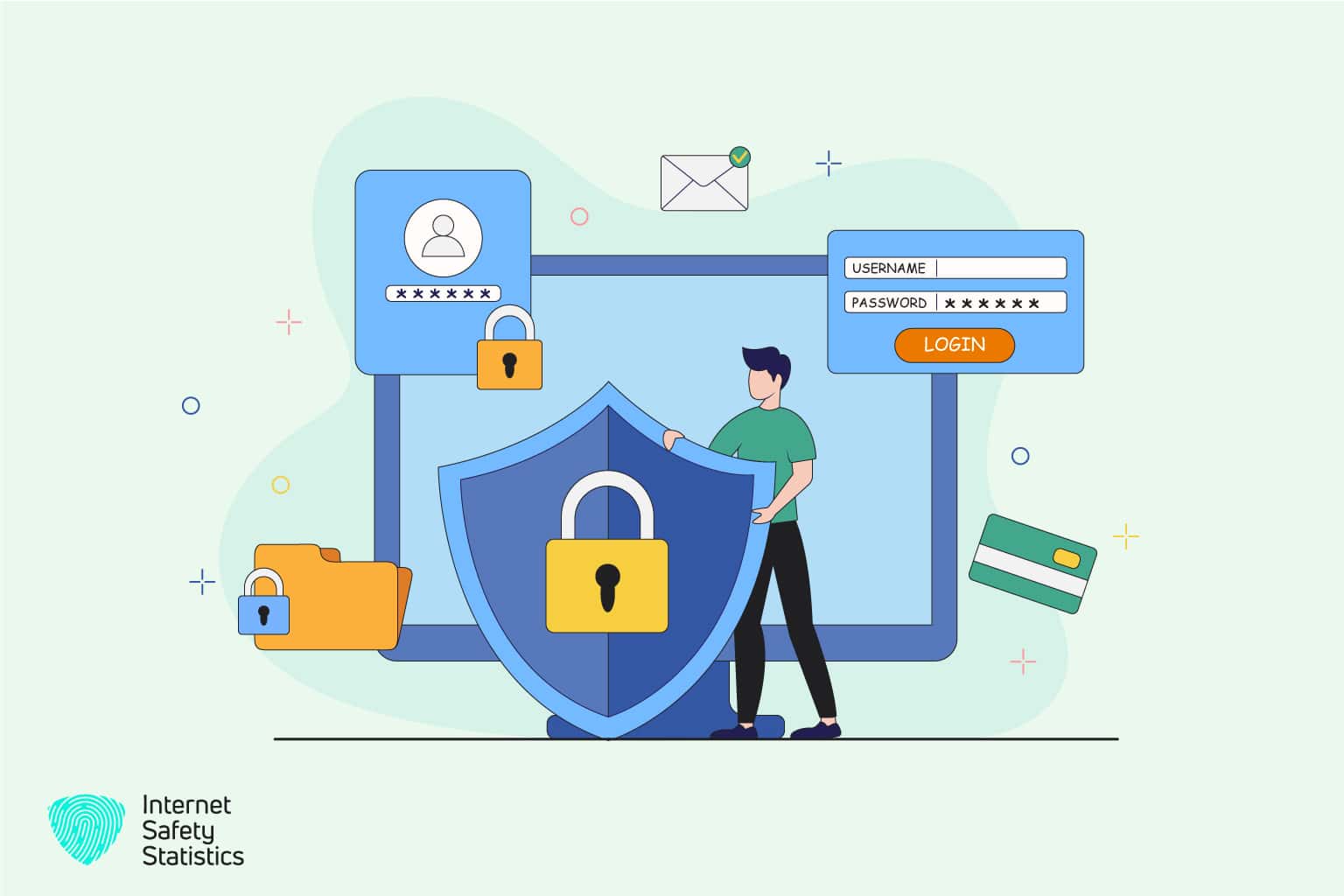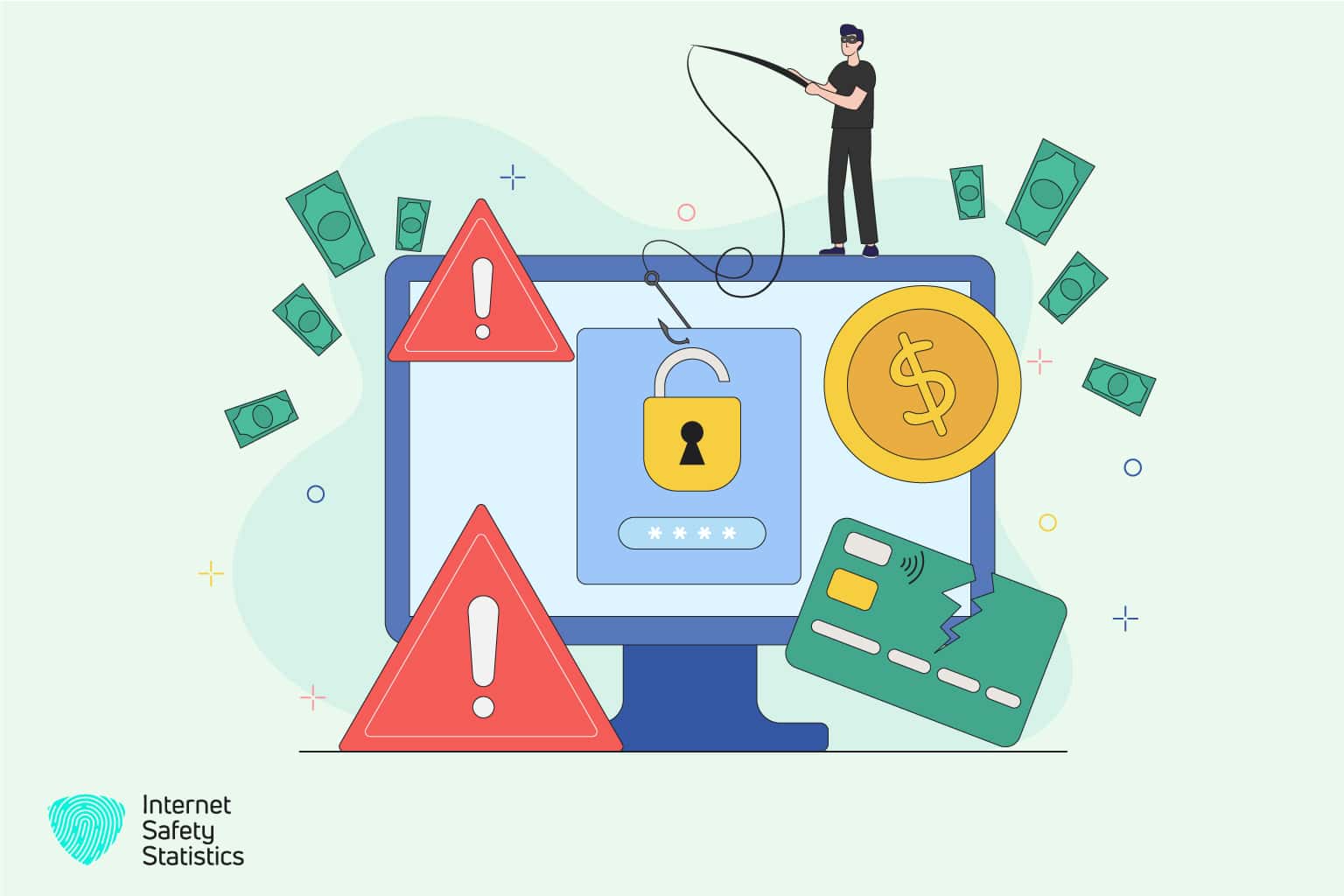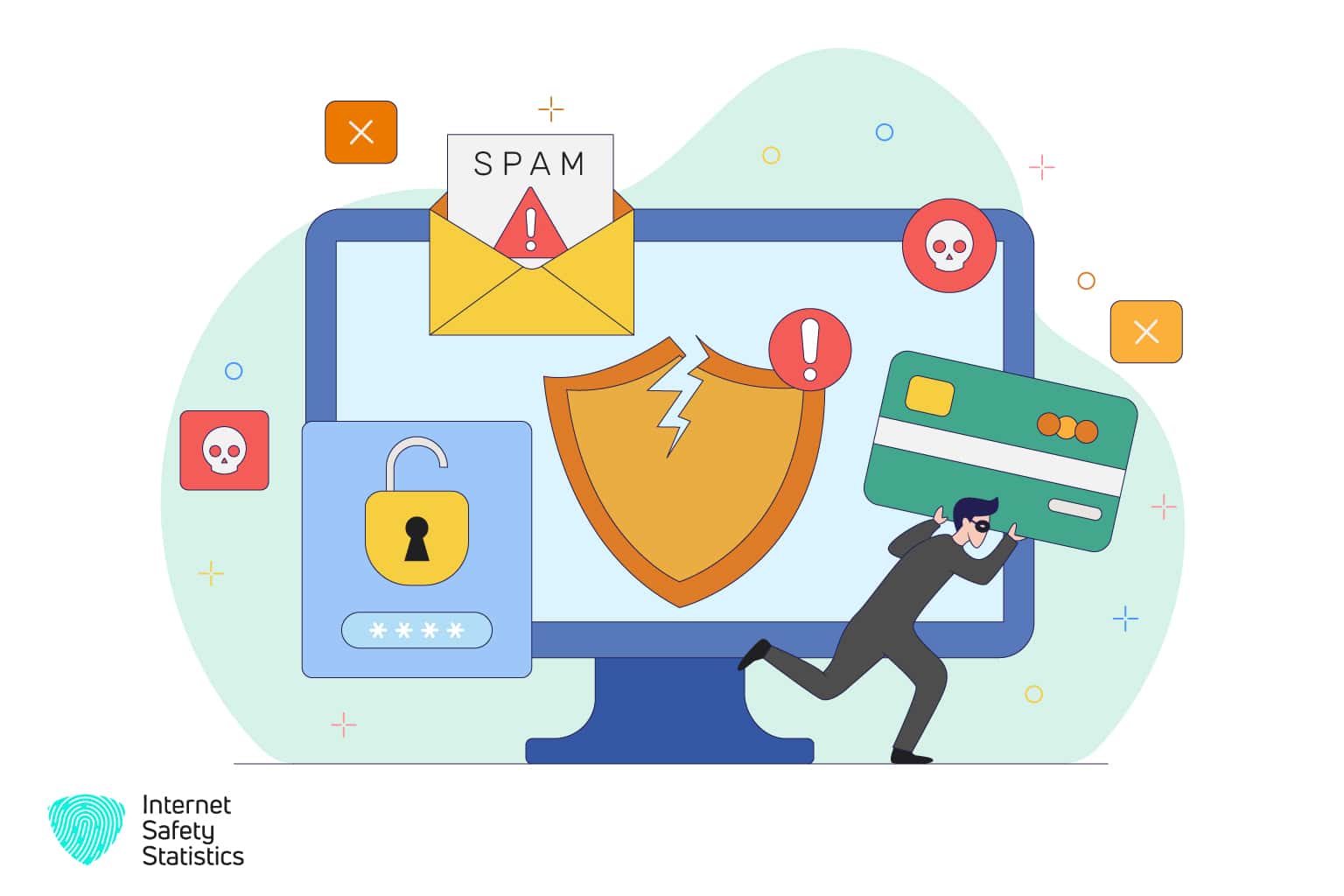
Cybersecurity has risen to the top of business agendas during the past years, driven by COVID-19 and the time cyber hackers had to develop their tools and techniques significantly. After a rough start, businesses are beginning to catch up with the developments in cyberattacks, but what does the future of cybersecurity look like?
The future of cybersecurity includes future threats, trends, and the industry as a whole. We will discuss these subjects in this article, as well as the steps to take to keep up with the upcoming change in this vital field.
The Future of Cybersecurity Threats
New cybersecurity threats plague cybersecurity systems around the world constantly. The upcoming threats are only a fraction of what cybersecurity officials are expected to face in the future.
1. Threat of Working Remotely
Many restrictions are still in full force in various countries around the world to help combat COVID-19, which means the majority of people are still working from home. This still provides a fertile environment for cyberhackers to undertake more attacks, and studies show that these threats will not be fading any time soon. Hackers look for misconfigured systems to take advantage of, which is much easier than targeting the cybersecurity system of a larger scale in an organisation.
While the IT teams work around the clock in the organisation to keep the network and data safe, an employee using a misconfigured device or inadequately protected can unintentionally give malicious factors access to the organisation’s network.
2. Targeted Cyberattacks

The extensive amount of time available to all people in the past years meant hackers had more free time to focus on developing their techniques and tools. The dark web made many tools available for purchase or rent to undertake a cyberattack, in what is known as the cybercrime as a service (CaaS) trend. This dangerous trend allowed hackers to better research and target companies that are most likely to pay the ransom to achieve easy illegal gains.
3. Disinformation Campaigns
The growing usage of social media and networking in the past two decades was fueled by an increasing need for information and news. In the present time, many resort to social media websites for the latest news more than any other services. This growing need for information is another factor that hackers will keep exploiting, especially for political agendas. Hackers can manipulate content, images, videos, and even audio to persuade the public in a certain direction or spread false news.
4. Wrongful Usage of Open-Source Tools
Software and cybersecurity developers work on developing and testing dual-use tools and malware in order to test them against systems and fortify security accordingly. The legitimate development of these tools takes years to master and is very costly, too, especially if they prove to be effective in complex malware attacks. Unfortunately, recently leaked malware showed that the over-the-shelf tools that hackers use are easier to disguise in the networks and are more cost-effective.
The Future of Cybersecurity Trends
Cybersecurity trends are not calming down any time soon; if anything, they are expected to multiply, with new threats added to the list.
1. Automated Malware
In the past decades, hackers usually undertook one malware attack at a time, mainly as a means of testing their skills. Recently, however, malware attacks are becoming more automated, which means the attacker can use machines to orchestrate a series of malware attacks at once. This automation will continue to cost businesses millions yearly in cybersecurity defence systems and in containing damages.
2. Ransomware Dominance
Ransomware has been the dominant malware in the past years and will continue to dominate for years to come. The magnitude of ransomware attacks every year is difficult to pinpoint, which is the reason why the public only knows of the largest attacks. There have been more ransomware campaigns in the past years that work on stealing the target’s data before encrypting it and targeting the target’s backup data as well. These campaigns have garnered massive amounts of money, and unfortunately, ransomware campaigns will only continue in the future.
3. Cybercrime Becomes a Service
The CaaS trend made millions of tools and techniques developed by hackers of all skill levels at the fingertips of individual hackers, and this dark economy is only going to grow more in the upcoming years. These tools allow beginner hackers to undertake complex attacks, and an advanced weapon becomes more dangerous in the hands of unskilled users. Despite the gruelling efforts by law enforcement forces around the world to crack down on this economy, hackers continue to evade the forces by adapting their techniques and tools to continue their illegal work.
4. Third-party Threat
The majority of businesses spend extensively on cybersecurity, but many of them tend to resort to third-party services instead of certified ones, which can pose a great risk. Not all third-party services are fully secure and can cause serious damage to the business’s database, especially if these services don’t include IT and cybersecurity teams. This approach to cost-effectiveness will ultimately result in more costs to face any damages caused by unsecured third-party services.
5. Polymorphic Malware
Hackers developed malware agents that now have polymorphic features, which means these agents can modify their identifiable features to evade cybersecurity teams and traditional detection techniques. Such polymorphic malware agents are widely available through CaaS, and they contain a certain line of mutative code to allow it to remain hidden.
6. Human Error
The human element is always present at some point in the cybersecurity process, whether for developing, testing, certifying or configuring. Human error is the cause of almost 95% of cyberattacks which happens by unintentionally giving out information, clicking on a fake link, leaving sensitive data unattended or even falling victim to theft of cyber information. Here comes the must of vigilant training and education to be updated with the current tools and techniques hackers use and how to respond in the event of an undergoing cyberattack.
7. USB Threats
USBs and portable media devices are everywhere today, and their usage is only going to increase. Hackers target removable USB devices to get into industrial businesses. A recent study showed that USB threat to industrial businesses posed 59% and that 19% of attacks on USB devices aimed at leveraging the media on the device at some point.
The risk of USB media devices is that you can easily transfer malware onto the device with the data you share. Malware isn’t the virus that plagues your personal computer only; it has more dangerous forms that can cause serious damage if transferred to a business’s network. In an industrial environment, malware that travels from a USB device to the business’s network can cause a glitch in the services and damage operations, which will cost millions in damage.
8. The IoT
Statistics revealed that more than 10 billion IoT devices were connected in 2019, and the number is estimated to reach more than 30 billion by 2025, which is triple the original figure. If these statistics prove anything, it’s the increased dependency on IoT technology and how individuals currently prefer these devices to non-IoT ones.
The main dangerous aspect of IoT devices is their low-security settings; a great number of businesses that provide IoT services struggle to continuously keep these services secure. This struggle is only expected to intensify as the number of IoT devices increases in the upcoming years.
9. Social Engineering
As cybersecurity developers continue to work on the security of internet connections and increase the likelihood of using quantum networks, human error still poses a great risk to data. Social engineering attempts such as phishing and business email compromise are still considered successful ways to trick individuals into unintentionally giving out sensitive data.
10. Advanced Financial Fraud

The face of financial fraud is expected to change with the increased tendency towards online payments. Online payments will likely be the standard form of payment in the near future if it isn’t already in several major service fields around the world. Platforms that offer online payment will need regular support. However, regulations won’t be able to catch up with these platforms. This gap will create more threats for financial institutions in the shape of threats to the blockchain and digital currencies.
11. Cybercrime Punishment
The road is still long when it comes to punishing cybercrime in the physical world. Despite the fact that many countries worldwide condemn cybercrime, the legal and legislative measures they take to mirror this condemnation in real life are lagging behind. One of the most significant factors contributing to this lag is the shortage in the number of cybersecurity professionals around the world, which makes it even harder to track cybercrime accurately.
The Future of the Cybersecurity Industry
There’s no doubt about it; businesses must undertake drastic changes in several fields of the cybersecurity industry. Here are the challenges facing this growing industry and where it is headed in the future.
1. Cybersecurity Jobs
The gap between the demand for cybersecurity officials and personnel and the actual number of these experts in real life is widening. In a survey by ISACA, 62% of more than 2,000 surveyed cybersecurity officials stated they were understaffed, and 57% still had unfilled jobs. There isn’t enough supply in the market to fulfil the increasing number of job postings; according to Emsi, there were fewer than 50 qualified candidates for every 100 job postings in the market.
2. Remote Work becomes Permanent
As discussed earlier, functionality was preferred over security when COVID-19 hit. So, a great number of businesses chose to allow their employees to work from home or anywhere in order to keep work going. An originally temporary solution, remote work, will become permanent in the future. A great number of businesses started to withdraw from renting offices, and many employees requested to keep working remotely.
Until now, proper cybersecurity measures aren’t applied to keep working from anywhere more secure for both employees and the company, and this is one practice that must change. Any temporary cybersecurity arrangements made by IT teams to accommodate the temporary situation of remote working must be changed into more permanent solutions to keep the company’s network safe. Additionally, the work of the IT, technology, and business teams must be coordinated to ensure maximum security, practicality, and functionality.
3. Extensive Automation
Since a great number of cybersecurity jobs still need to be fulfilled, many organisations resort to using AI and machine learning to compensate for the lack of cybersecurity officials. This increased automation has proven effective in several aspects, such as the speedy detection of threats, malicious factors, configuration errors, and software vulnerabilities. The human factor might take more time to discover these threats or might not be able to discover them entirely.
The development of AI and machine learning technologies will help the small number of cybersecurity officials to perform their jobs excellently and will give them more time to focus on more strategic tasks.
4. Zero-trust Principle
The Zero-trust Principle means verifying every user, device, or service when it attempts to connect to your network. This principle is an old one, but it needs to be readopted in the cybersecurity business. Do not assume that a previously secure device will continue to remain the same, so you must reverify it before the new connection. The principle also states to grant entities access they need only, which will help you keep track of their activities.
Zero-trust is a principle that you build your cybersecurity policy around to check and recheck the identities of individuals and devices and keep track of entities’ activities. To apply the zero-trust principle, you need your security officials, software developers, and network administrators to work together to implement a multi-layered and phased plan.
5. Improving Response Capabilities
Cyberhackers are increasingly making massive amounts of money in ransom as they make ransomware attacks a profitable business. They keep locking users out of their accounts, encrypting data, and demanding large sums of money to return the data and access to the users. Several organisations suffer from slow response capabilities in the face of ransomware, and cyberhackers are maximising this lack of speed.
Organisations need to prepare an action plan in the event of any ransomware attack, preparing for the damage before it takes place. This plan will require the work of all concerned teams, such as the administrators, legal affairs, and public affairs, to ensure the plan is well-set and organised to handle any possible attack.
6. Supply Chain Risks
Unfortunately, we trust supply chains with our information, but they are not always fully secured. If one supply chain is compromised, it can lead to the leakage of user data and credit card information and result in compromising other supply chains as well, such as in the SolarWinds incident. This incident exposed user information and resulted in providing their customers with compromised services as well.
The grave threat posed by supply chains must be addressed, and there are several ways to do so. We can hold vendors accountable for their poor security measures and ask for legal transparency into the vendors’ security measures before renewing their contracts.
Steps to Prepare for the Future of Cybersecurity
As a business owner, what can you do to be well-prepared to face the aforementioned cybersecurity threats and trends?
1. Cybersecurity is a shared responsibility
The roles and responsibilities of CEOs shouldn’t be limited to presenting threats found by the company’s CISO to the board of directors. A CEO is deemed responsible for setting and applying the company’s cybersecurity action plan.
2. Prevention is key
Since prevention is better than cure, companies are increasingly reevaluating the protective and preventative measures they have in place. This reevaluation can result in replacing old antivirus software and adding forensic capabilities that can help protect the company’s devices and data, even remotely.
3. Keeping up with new technology
The growth of cybersecurity technology in the past 20 years is a fraction only of the upcoming technologies in the field. The entire cybersecurity community is still working on combating many developed threats, which is why organisations need to adopt new cybersecurity technologies as soon as they are tested and verified.
The future of cybersecurity might appear bleak at first, especially with the continuous evolvement of several threats, such as ransomware. However, so far, no cyber threat has proven to be unbeatable, and with constant work, these threats can be controlled as well.
